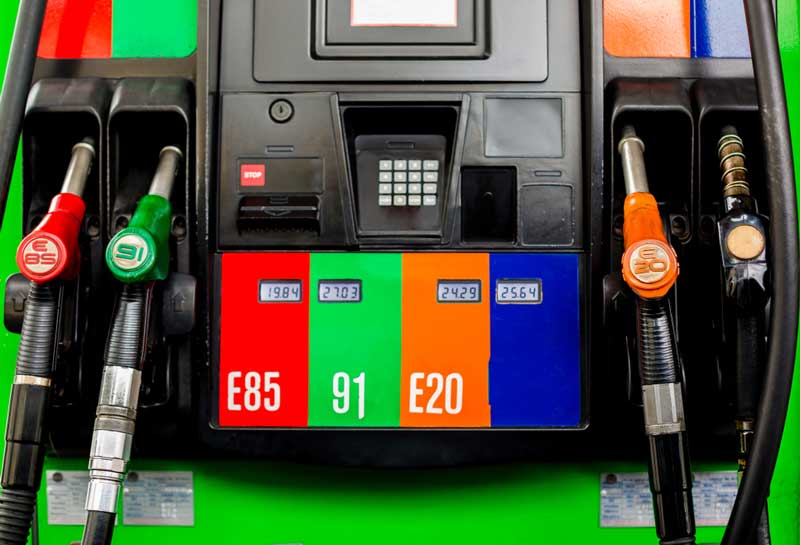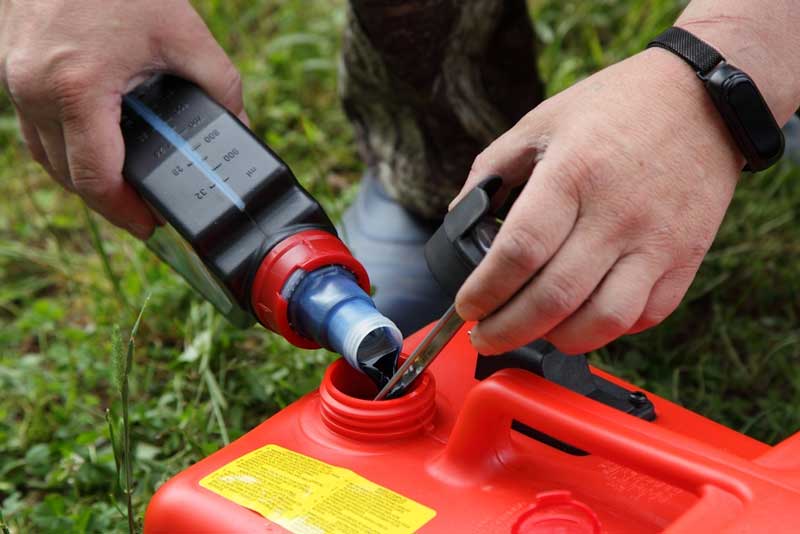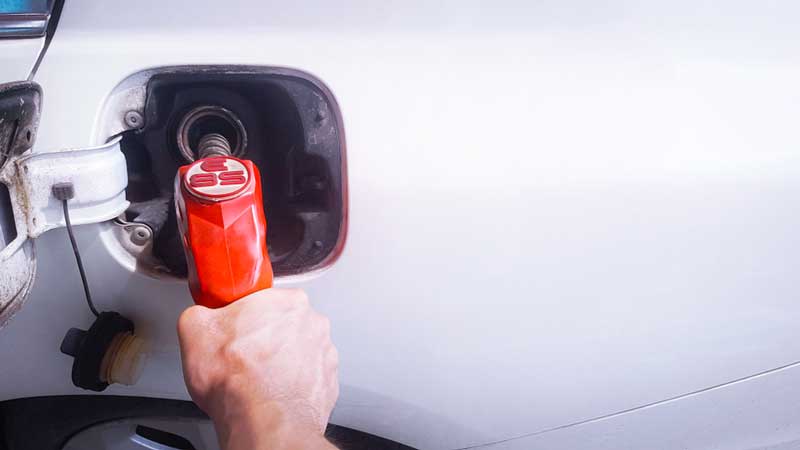Sometimes, motorists get inquisitive about certain functionalities of their vehicles. A good number of them are economical questions, where they try to save cost or save a situation involving oil and gas. So how do you aid your gas? Can E85 be mixed with normal gas?
If you are in this category, just relax because you are going to find out pretty soon.
E85 is called flex-fuel. You can mix regular Gas with E85, so long as your flex fuel car can contain fuel with ethanol of a high level.
In this article, we will discuss the differences between E85 and regular Gas, if there is a possibility of mixing them, some advantages and disadvantages of using E85, what a flex-fuel vehicle (FFV) mean, and more.
Lets kickoff!
Can You Mix E85 With Regular Gas?
It is very safe to mix E85 with regular gas in as much as your vehicle is a flex-fuel vehicle designed to handle fuel with high levels of ethanol. Later in this article, we are going to look at a few things to remember when discussing the differences between e85 and regular gasoline.
E85 is also called flex-fuel, a fuel that is ethanol blended. In the US, ethanol flex-fuel is obtained from corn. If you are talking of alternative fuels, ethanol is a very famous option. E85 is a mixture of 15% gasoline and 85% ethanol, and it is being used in compatible cars.
Ethanol fuel aids in the reduction of greenhouse gasses at about 50%, and it is way cheaper than normal Gas. However, the fuel that is ethanol blended gets less fuel mileage, which makes it costly to use generally.
Choosing the correct fuel for a vehicle is very important, in ensuring its efficient power and performance, but you should also have the wellness of your vehicle in mind.
Have you ever wondered if regular Gas can be mixed with E85? Unfortunately, yes. It is safe to do so, but it depends on whether you own a flex-fuel car, built to contain fuel with ethanol of high levels.
Going forward, we will discuss the differences between E85 and regular Gas, and if there is a possibility of mixing E85 and regular Gas.
What is E85 Gas?
E8 is a blend of 15% gasoline and 85% ethanol. It is being used in cars that are compatible/flex-fuel cars and runs either on gasoline or E85. In the US, E85 can be obtained from numerous gas stations.
Ethanol can be renewed (renewable fuel) and is made from sugarcane, corn, or other plants. When you burn it, carbon dioxide is released into our atmosphere, and during growth, carbon dioxide is captured. This is what makes ethanol a “carbon-neutral” fuel.
Flex Fuel cars are built for running on both gasoline and E85. They possess special fuel systems and engines, which share compatibility with ethanol.
So many people will go for E85 because of its renewable advantage, and it also aids in the reduction of one’s oil dependence. Moreover, it has a low carbon footprint, unlike gasoline. Nonetheless, E85 is usually more costly than gasoline. Also, you will hardly find it in many places.

What is the Difference Between Regular Gas and E85?
E8 is a blend of 15% gasoline and 85% ethanol (Ethanol fuel oxygenates). It also causes a reduction in pollutants, resulting from hydrocarbon emissions.
Ethanol is grain alcohol refined from natural products such as sugar cane, wheat, and corn.
Compared with normal Gas, the E85 possesses a higher octane rating; it measures the extent of fuel compression it can hold before it detonates.
In an average man’s terms, the higher rating of octane means extra compressive force, thus, giving additional power to one’s combustion engine.
Also Read: How to Clean a Carburetor Without Removing It
Can One Mix E85 with 87, 89, 91, and 93 Octanes or Regular Gas?
Mixing the E85 with every other gas type is safe, provided your vehicle is certified flex fuel.
Figures 87, 89, 91, etc., show the gas octane rate.
The type of gasoline has almost nothing to do with the safety of using it with E85; it rather shows the “power” of a gas, as it was.
What Are Some Merits and Demerits of Using E85?
We have numerous advantages and disadvantages of making use of E85:
Merits
- E85 is renewable and is gotten from plants like sugarcane or corn.
- It improves air quality and reduces emissions
- It is less expensive than the usual gasoline
Demerits
- It is not every vehicle that can use E85. Check your vehicle with the manufacturer, before you use it.
- If you use excessive E85, the engine may begin to ping and knock. Keep to the 50/50 mixture of regular Gas and E85, to get a good result.
- E85 has lower energy, than regular gasoline. Thus, your vehicle may not function as well as it would, if you used regular Gas.
- If you fail to use E85 in the correct proportion, or your vehicle is not designed to use it, it can spoil your engine.
What is the Meaning of A Flex-Fuel Vehicle (FFV)?
The FFV is a vehicle that runs on a mixture/blend of gasoline and ethanol or pure ethanol. Ethanol can be obtained from plant materials such as corn.
Every new vehicle comes with its engine management system, which can adjust for a blend of gasoline and ethanol. This means that one can mix both fuels, and not worry about spoiling the vehicle.
Many FFVs can move on blends of about 85% of ethanol but do well to consult the vehicle manufacturer and ascertain its maximum limit. Using excessive ethanol, which your vehicle is not designed to handle, can lead to engine problems like pinging and knocking.
The FFV is a good way to save fuel cash, and reduce emissions. Ensure that you mix both fuels in their correct proportions to stay safe.
How Do Flex Fuel Engines Work?
Flex-fuel engines also run on ethanol, gasoline, or a mixture of the two. The engine immediately adjusts the ratio of gasoline to ethanol, depending on the availability of fuel.
Sensors found in the fuel system, monitor your ethanol content and send a sign to your engine’s computer. The sign informs your computer of the amount of ethanol in its fuel, and the amount of power needed by the engine.
Your computer adjusts the fuel-to-air ratio, and other engine parameters to ensure optimal performance. When there isn’t any ethanol in your fuel, your engine will function like a normal gasoline engine.
If you have more ethanol than gasoline in your fuel, your computer increases the quantity of ethanol injected inside your cylinders.
If the fuel ethanol is less than the gasoline, your computer decreases the quantity of ethanol being taken into your cylinders. Flex-Fuel engines run on any ethanol-to-gasoline ratio, which is from 100% of ethanol to 0% of ethanol.
Flex-Fuel engines come in various configurations and sizes. You can use them in vehicles, trucks, buses, and vans.
Does the Regular Gas Contain Ethanol In It?
Yes. Many gases have ethanol in them. The percentage varies, but most times, it is about 10%.
Ethanol can be renewed (renewable fuel), and is made from plant materials like sugarcane. It is then blended into gasoline which aids in improving fuel economy and reduces emissions.
Some vehicles run on natural ethanol, but many require a blend of gasoline and ethanol to run efficiently. Your vehicle’s computer then adjusts, for a blend that gets to ethanol of 85%. So mixing 50% of the usual Gas with E85 Gas, should not be an issue.
Most people are worried that ethanol is capable of causing damage to an engine. The truth is that ethanol-blended gasoline has been used for over a decade, and nothing shows that it leads to damage. Rather, ethanol cleans the engine and improves its efficiency.
Can One Mix E85 With Regular Gas?
Both fuels blends without any issues whatsoever.
Hence, there are things to bear in mind before mixing both fuels. First, ensure that your vehicle is one of those that runs on ethanol. You are aware that all vehicles cannot run on ethanol. Contact your manufacturer or check the owner’s manual, if you are not certain.
Secondly, know that using ethanol of a higher percentage can lead to issues. An example is, when there are excessive E85 in the tank, your engine can start pinging and knocking. The reason is that ethanol contains extra energy than normal gasoline and thus, overloads the engine when not adjusted.
Finally, stick to the 50/50 percent mixture of regular Gas and E85. This ensures that the vehicle runs smoothly. Also, problems will be avoided.
Would Mixing Gas Damage A Flex-Fuel Vehicle?
We do not have any proof that when you mix Gas, it may cause damage to the FFV. Even a blend or mixture of gasoline and ethanol is the best way to ensure that your vehicle runs smoothly.
It is a good thing for you to check the vehicle with its manufacturer, to ensure that the vehicle can contain numerous ethanol blends. Some vehicles are unable to function on anything that is not pure gasoline. This is why you should be aware of the type of fuel used by your vehicle.
Using E85 in the FFV is the best way of saving money, and reducing emissions. Ensure that you mix both fuels in their correct proportions, then you are good to drive.
How to Calculate the E85 Mix?
To calculate the mix, get one ethanol gauge to determine the amount of gas mixture that is ethanol.
Bear in mind that E85 doesn’t mean 85% in many cases.
E85 gases may have from 50 to 83% ethanol; this is within a regulatory standard.
Will E85 Damage My Engine?
If you do not have the FFV, E85 can cause serious damage to the seals and filters, which keep the components tight and nice in the fuel system, causing visible damage with time.
If you have an FFV that is certified, E85 cannot cause damage to your engine.
To know if you own a (flex-fuel) FF vehicle, do the following:
- Check for a fuel filter ring or yellow gas cap.
- Examine your fuel door.
- Look at the car Owner’s manual.
- Check for badges on your car’s body.
Many FFVs possess a lining or yellow gas cap on their fuel filter ring, which can be used for identifying the car.
In addition, some vehicles own indicators on the vehicle’s body or fuel door, to say that one can use E85.
If everything fails, look at the owner’s manual.
It will show the last word if one can use E85 in the vehicle.
What’s an Octane Rating?
The octane rating measures the fuel’s possibility of resisting knocking. Knocking is a noise that one hears, when the fuel-air mixture in one’s cylinders detonates in more than one place, simultaneously. It is like a knock on the door.
Detonation causes damage to your engine, and it is best to use fuel with an octane rating high enough for one to resist. Regular gasoline has an 87-octane rating. The octane rating of E8 is about 100.
What is an Octane Booster?
The octane booster can be defined as an additive of fuel, built for increasing a gasoline’s octane rating. The less an octane rating is, the higher the possibility of fuel detonating untimely, in your engine. It can give rise to increased engine wear, and reduction in performance. This is as opposed to when there is a higher octane rating.
You can get octane boosters as powder and liquid additives. The content is a high amount of aromatic hydrocarbons; these compounds contain hydrogen atoms, and carbon placed in a ring.
As the hydrocarbons are put inside an engine, they aid in suppressing knocking or another form of combustion abnormality.
We have numerous varying octane boosters in the market. They are all designed for their particular gasoline type. It is best to carefully look at the label, to pick the right booster for your fuel. Making use of the wrong booster can cause damage to your engine.
If you want to increase your vehicle’s performance, try using an octane booster. You can find them at many automotive stores and can be used easily.
Ensure that you stick to the recommended directions written on the bottle, and test your fuel octane rating before you add any boosters.

Can E85 Improve the Performance of a Non-flex Car?
We have numerous debates on whether or not the E85 increases the functionality of a car that is non-flex. Some are of the affirmative position, whereas others are opposing it. There is no particular answer to the question.
This is based on the vehicle’s model and the particular engine.
However, using E85 in a car that is non-flex cannot possibly lead to peak performance gains. In some cases, it can reduce performance. The reason is that E85 has less energy than gasoline- 33% or thereabout.
Therefore, if the vehicle is not built to function on E85, one may realize that it does not function well if you switch to the fuel.
There are some things one can do to improve the functionality of a car that is non-flex and runs on E85. First, ensure that the engine is rightly tuned for the fuel.
You might not have to upgrade the engine components, for instance, the ignition system and fuel system. Finally, one can increase fuel octane rating by using an octane booster. This helps the vehicle run efficiently, and attain good performance.
Also Read: Fuel Pump Fuse Location
Frequently Asked Questions – Can You Mix E85 With Regular Gas?
Can you switch between E85 and regular Gas?
Making use of the octane level of gasoline in the FFV is acceptable. The FFV sensors detect if the fuel is pure gasoline, or if it is 85% of ethanol. It also makes needed changes to ensure optimal injection of fuel and combustion timing. For example, pouring E85 into one’s vehicle, which isn’t made for flex fuel, is harmful.
Can you mix E85 and 87 gas?
Of course, regular gasoline can be mixed. Both fuel blends with no issues.
Can I switch back and forth between E85 and regular Gas?
E85 is a blend of 15% gasoline and 85% ethanol and is used in compatible cars. In most cases, people wonder if they can use normal gasoline, rather than E85 in their cars. Of course, you can do so, but ensure that you keep to the 50/50 recommendation.
Can you replace E85 with regular Gas?
Of course, standard gasoline is also good to use in FFVs. This means that Gas is mixed with methanol and ethanol. Not minding the fuel you place in your FFV, you store them in the same space/tank.
Is it better to use E85 or regular Gas?
E85 needs fewer combustion temperatures. In addition, it provides a thermodynamic cooling effect, that usual gasoline does not give. It is more beneficial because the E85 aids in keeping an engine cool. Thus, keeping your engine healthy.
Can I switch from E85 to 87?
There is no need for draining it; Ford recommends that you wait till you need more fuel if you need to change from E85 to 87 or 87 to E85. You shouldn’t do a repeated alternating, between gasoline and E85.
Final Thoughts – Can You Mix E85 With Regular Gas?
Finally, one can mix regular gasoline with E85 without a problem. Although, it is best to check with your vehicle’s manufacturer, and handle numerous ethanol blends.
Using a mixture of gasoline and ethanol is preferable to keep your vehicle running properly. In conclusion, do well to know if your car is a fuel-flex car to avoid any particular problems. If you search for better performance, you must use octane boosters or upgrade the engine components.

